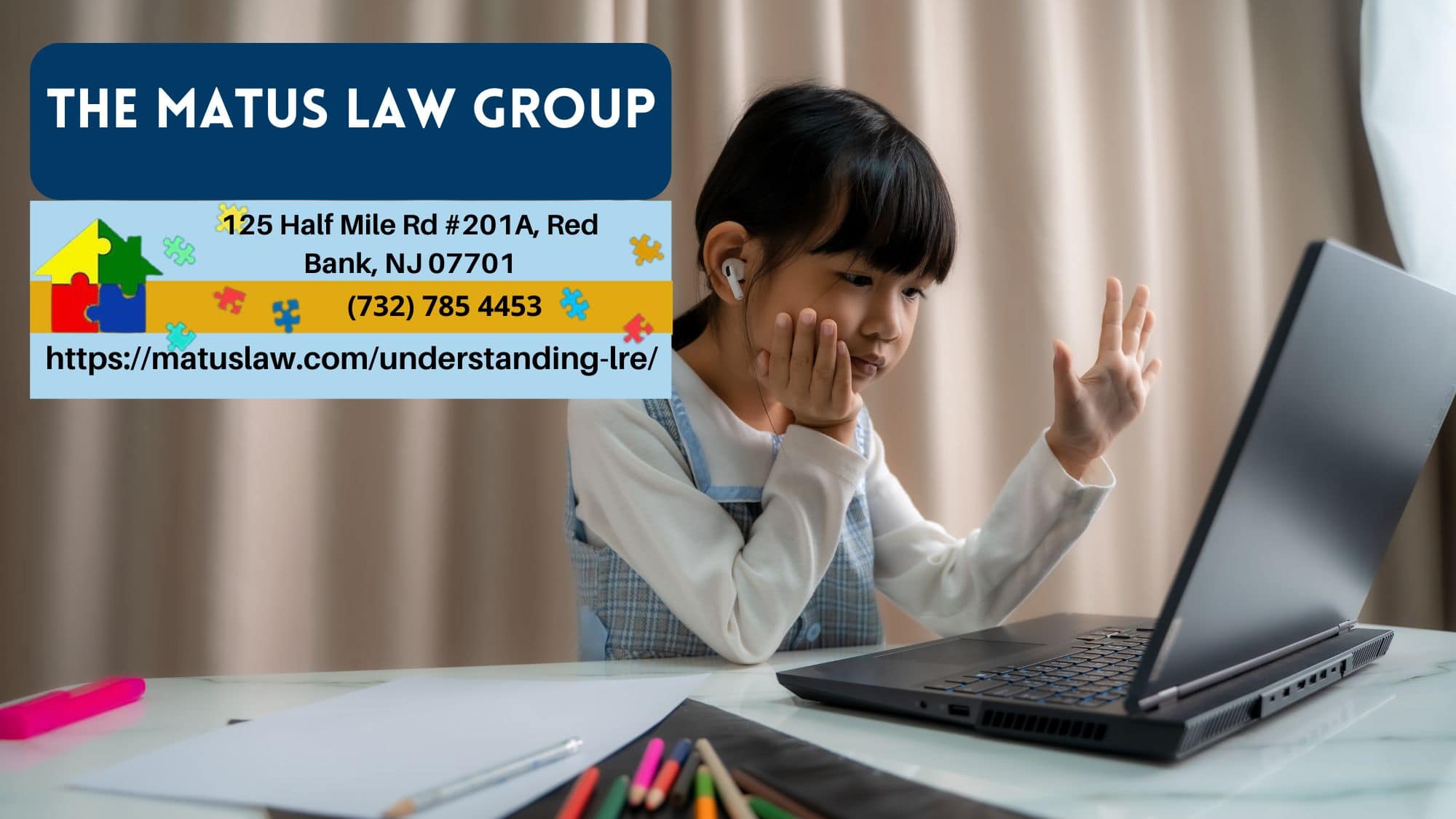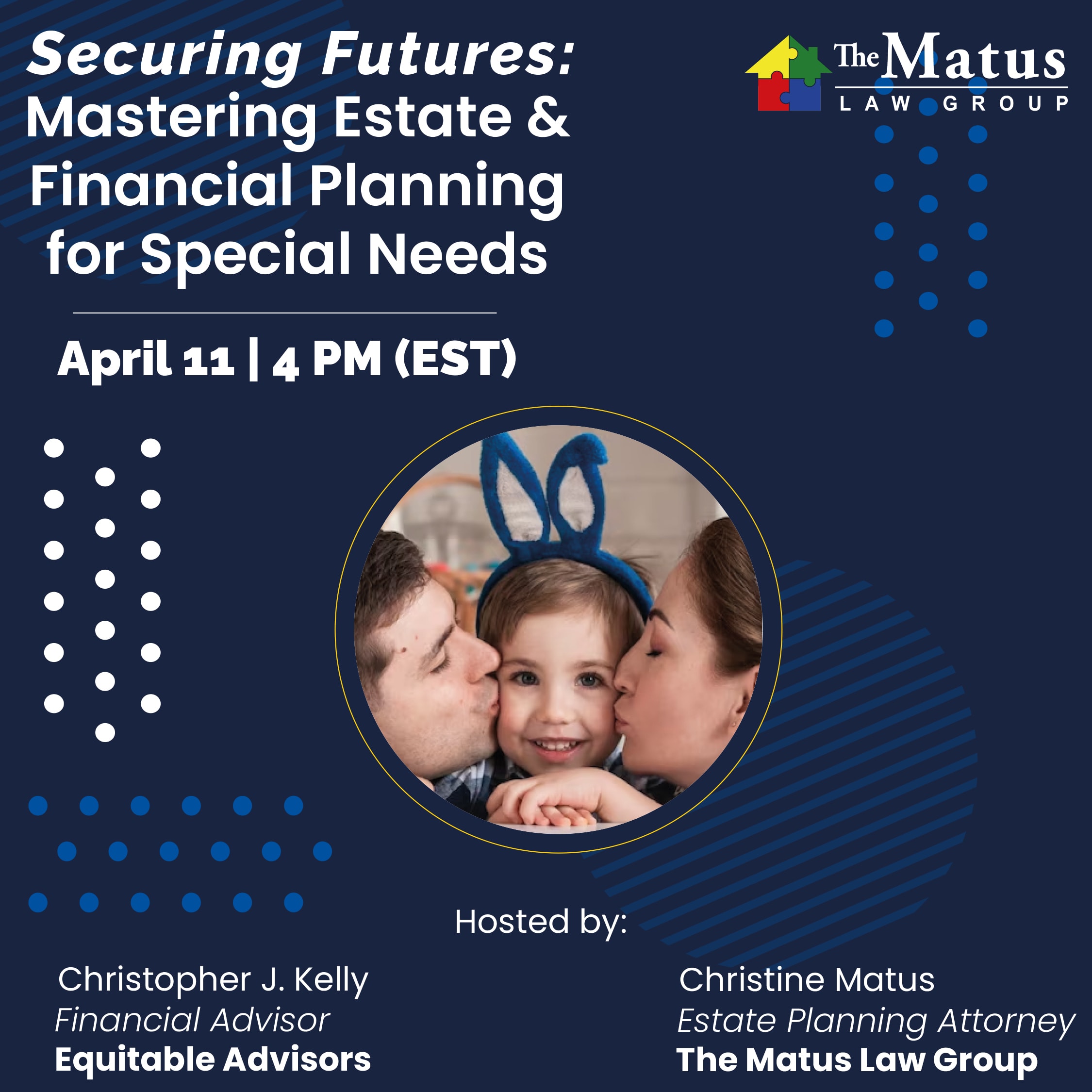When you have a child with special needs, there’s a lot to consider when trying to meet their educational needs. Not only do you want them to learn and hit academic benchmarks, but you also want to nurture their social growth and help them feel included. In the past, students in special education programs often spent all or most of their time in a separate special education classroom, seeing their peers for only a few minutes per day. Now, students have the legal right to learn in the least restrictive environment that still meets their unique educational needs, as part of their right to Free Appropriate Public Education (FAPE).
When it comes to meeting the educational needs of your child with special needs and navigating the Disabilities Education Act, turn to The Matus Law Group. Our compassionate New Jersey special needs trust attorneys understand the importance of ensuring their academic progress while fostering social development and inclusion. Contact us at (732) 785-4453 to ensure your child receives the comprehensive educational support they deserve.
What is the Least Restrictive Environment?
The concept of the Least Restrictive Environment (LRE), as defined in the New Jersey Administrative Code (6A:14-2.10), refers to the educational setting that offers the most suitable education for students with special needs while promoting their inclusion alongside non-educationally disabled peers to the greatest extent possible.
Inclusive education is at the core of the LRE principle, aiming to provide educationally disabled students with opportunities to engage in academic and non-academic activities, fostering learning and interaction among all students.
When determining the LRE, several factors come into play:
- Assessment of Disability: The nature and severity of the disability play a crucial role in determining the required level of assistance and adaptations. This assessment helps determine whether a regular classroom environment is suitable or if a more specialized setting is necessary.
- Academic and functional abilities: The student’s abilities and learning style are taken into account to assess the required level of support and identify the most suitable educational environment.
- Social and emotional needs: Schools must take into account a student’s social and emotional requirements to provide the necessary support and resources that promote academic success and facilitate appropriate social interactions with peers.
- Support services: When determining the most suitable placement for a student, the availability of support services such as special education instruction, assistive technology, and related services is taken into account.
- Impact on non-disabled peers: The examination of the effects on non-disabled peers is done to ensure that the least restrictive environment fosters a positive and inclusive learning environment for all students.
- Parental input: Parents should be actively involved in the decision-making process and their input should be considered when determining the appropriate educational setting for their child.
Educational institutions can strive to create an environment that maximizes the opportunities for students with disabilities to receive an education that meets their needs while encouraging integration and equal participation with their non-disabled peers.
A New Jersey special needs trust attorney can play a significant role in advocating for the educational rights of students with special needs. At The Matus Law Group, our attorneys can provide guidance and representation for families navigating the complex world of special education law. Our goal is to ensure that students receive the appropriate services and accommodations necessary for their academic success and personal growth. Contact us today to schedule a consultation.

The LRE Principle
The guiding principle behind the least restrictive environment is that students should be with their peers as often as possible in an inclusive classroom. Per the Individuals with Disabilities Education Act, this principle must be followed to the “maximum extent that is appropriate.” This provides some flexibility in determining which environment is most suitable for each student. Separate classrooms or schools should only be considered when a standard classroom is incapable of meeting a student’s educational needs, even with the help of services and aids.
Placement Should Be Discussed During IEP
Your child’s LRE should be discussed during your annual IEP meeting. While teachers, aids, psychologists, and other school professionals may be part of your child’s IEP team, remember that you are also part of the team. You can and should provide input on what your child needs to learn and which environment you feel is appropriate for their needs. A child’s LRE can change from year to year, based on their growth and goals, so don’t be afraid to revisit this topic even if educators seem content with the child’s current learning environment.
Support May Be Required
You know that each child’s needs are unique, which is why the LRE doesn’t dictate how students’ time should be spent—there’s no one solution that fits every child. While one student may be able to spend all day in the general classroom with help from an aide during one subject, another student may need to spend at least half of their time in the special education classroom to reach their full learning potential. To help students spend as much time in the classroom as possible, school districts must provide the necessary support and assistance. Options include:
- Tutors and educational aides
- Assistive technology
- Testing accommodations
- Activity modifications
An IEP could lead to one of several different outcomes for your child. Your child might be able to spend their entire day in the general classroom with specific supports, divide their time up between the special education classroom and the general classroom, spend all of their time in the special education classroom, or attend a specialized program at a different school. Having a child spend all of their time in the special education classroom or in a specialized separate program should only be considered if the child’s needs are such that a general classroom is completely unsuitable, even with support.
| Necessary Support and Assistance | Description | Examples |
|---|---|---|
| Tutors and educational aides | Additional support personnel to assist the student | One-on-one tutoring, in-class support from an aide |
| Assistive technology | Technological tools to enhance learning and accessibility | Text-to-speech software, communication devices |
| Testing accommodations | Adjustments made to assessments to accommodate the student’s needs | Extended time, use of assistive devices |
| Activity modifications | Adaptations to classroom activities to meet the student’s needs | Simplified instructions, modified assignments |
Why Is LRE Important?
The Least Restrictive Environment (LRE) plays a pivotal role in special education, allowing students with disabilities to be educated alongside their non-disabled peers whenever possible. This inclusion is not just a legal requirement under the Individuals with Disabilities Education Act (IDEA); it’s a practice rooted in evidence that shows significant benefits for all students involved.
For students with disabilities, LRE promotes better social interactions and communication opportunities, which are critical for developing social skills and self-esteem. Being part of a general education classroom exposes these students to the same curriculum as their peers, enhancing their academic learning and providing them with a more enriched educational experience. Such settings allow for the use of various accommodations and modifications that can be tailored to meet individual needs within the framework of general education.
Furthermore, LRE facilitates a better understanding and respect for diversity among students.
students. It teaches empathy and respect for differences, preparing students for real-world interactions in diverse communities. Additionally, inclusive settings can lead to innovative teaching strategies that benefit all students, including the use of technology and differentiated instruction that cater to varied learning styles and abilities.
Adhering to LRE principles also challenges educational systems to develop and implement supports that benefit diverse learners, thereby improving educational tactics across the board. In New Jersey, the LRE ensures that placement decisions are carefully considered, focusing on the student’s ability to succeed in a less restrictive setting with the necessary support, rather than defaulting to more segregated environments. This approach supports broader educational objectives focused on equity and access, establishing LRE as a key component in fostering an inclusive learning environment.
As a parent, your most important job is advocating for your child. Whether you’re getting ready for your first IEP or need help getting your child into a more inclusive environment, trust the team at The Matus Law Group to work with your family to develop solutions. Contact us at (732) 785-4453 to get started.



